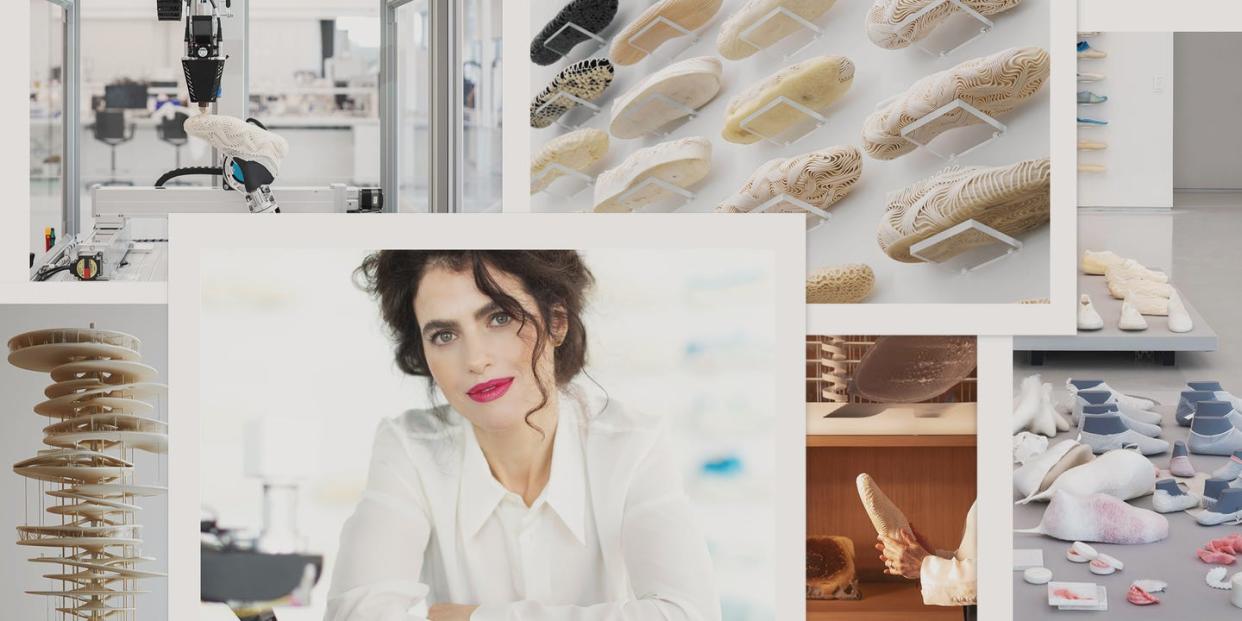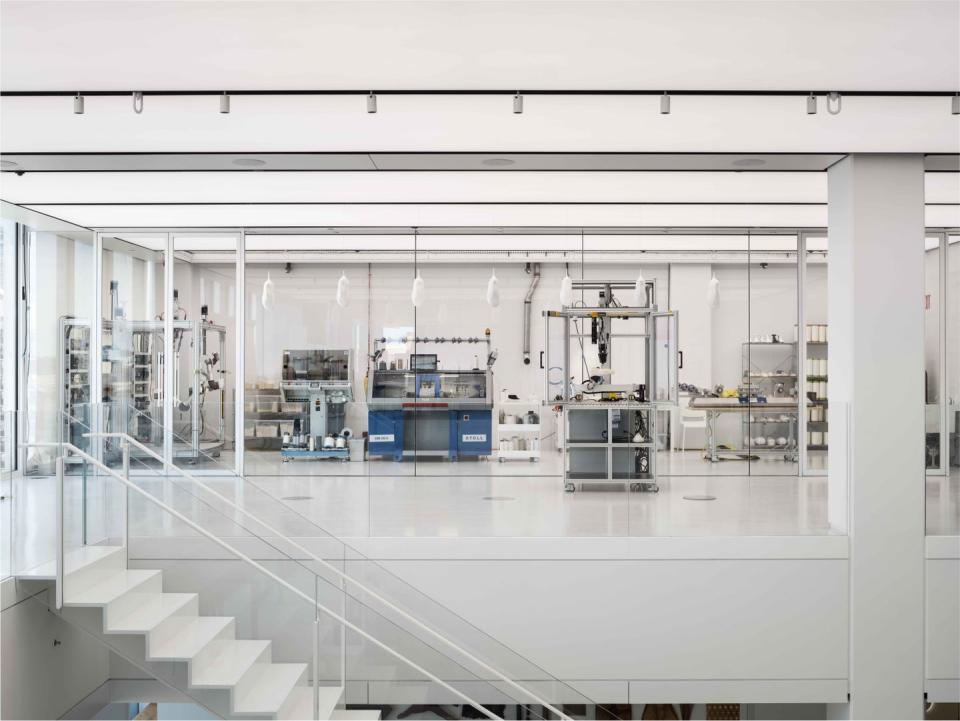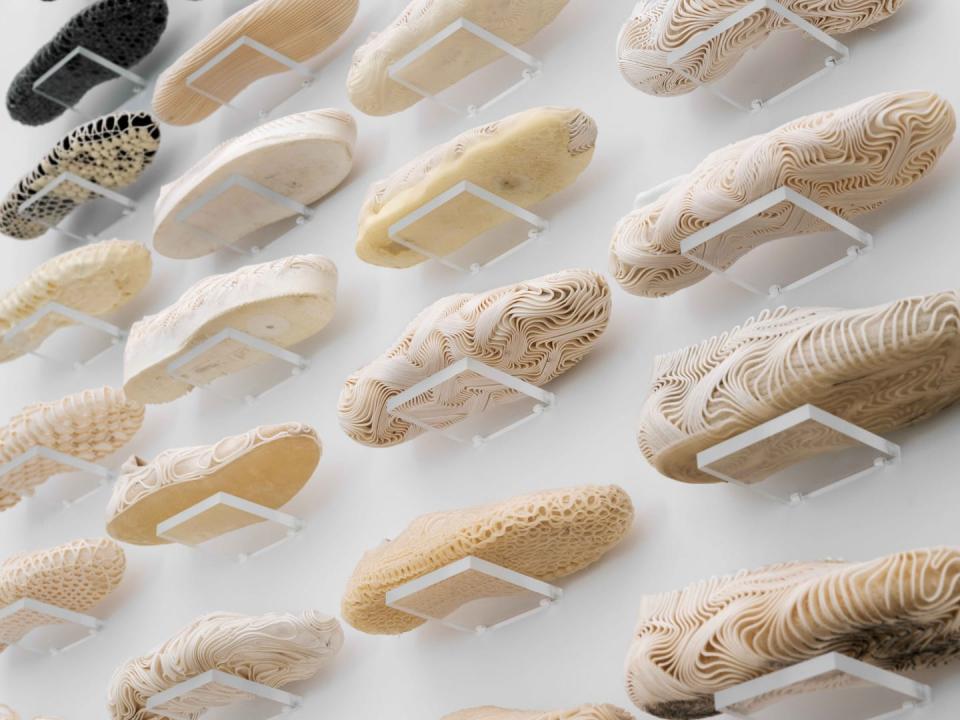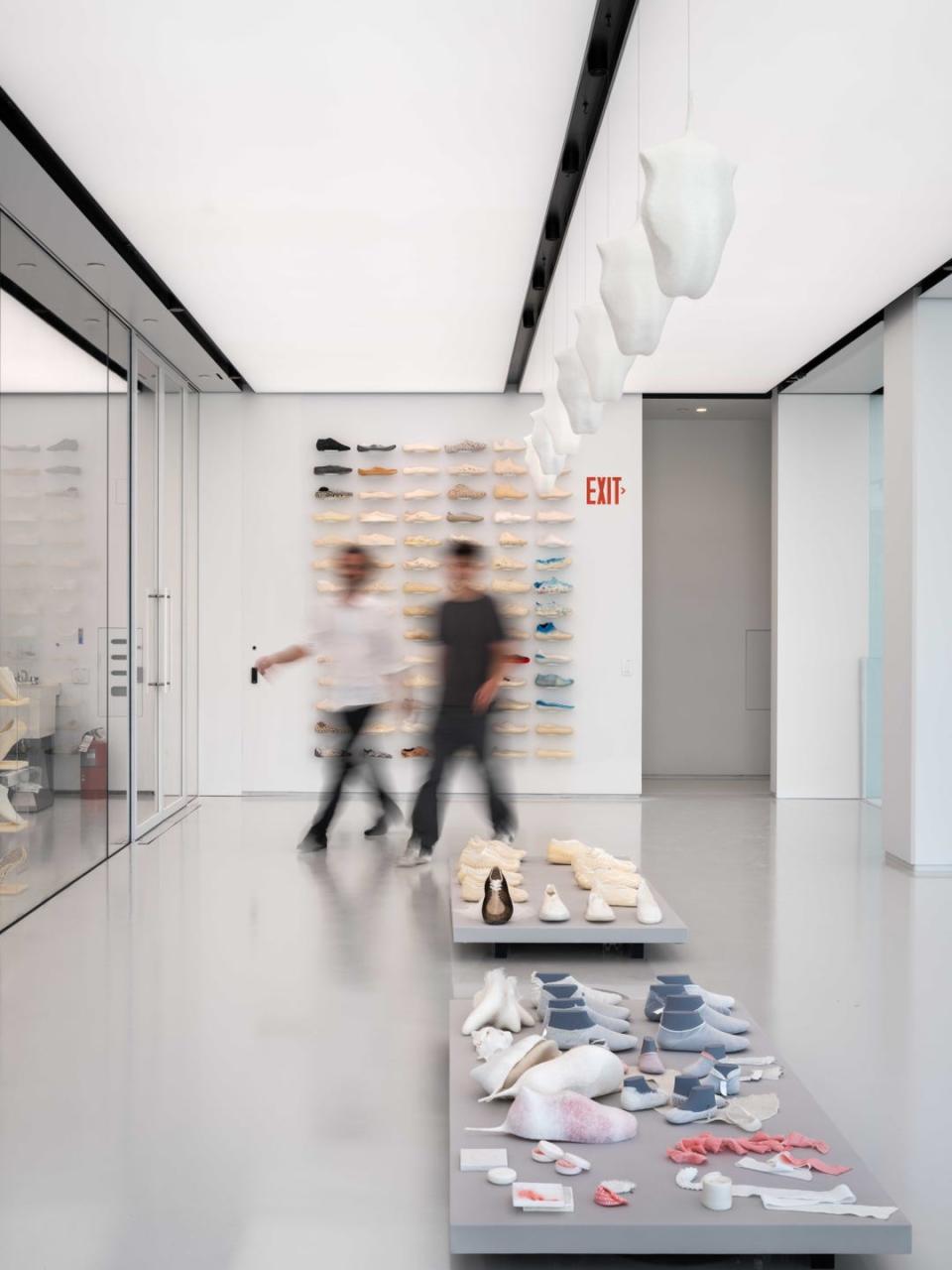Neri Oxman Believes in Fashion Reincarnation


Style Points is a weekly column about how fashion intersects with the wider world.
Behind an unassuming facade on 11th Avenue, many stories up, is what looks like something between a sneakerhead boutique, an architecture firm, and a laboratory. In fact, it’s a bit of all three. The white loftlike space features balconies draped in greenery and is decorated with miniature models of a city from above. It feels very much like we’re inside the future. But this future, unlike the one speculated about in The Graduate, does not involve plastics.

In front of me stands Dr. Neri Oxman, wearing a black blazer with a asymmetic, ruffled tail and black trousers. The former MIT professor’s new project, OXMAN, a self-described “design and innovation company” unveiled to members of the press on Thursday, is, she says, her attempt to “heal three broken industries”: product design, architecture, and molecular design. During the process, she says, she and her team asked themselves questions like “What does biodiversity smell like?” and “Can buildings rebuild ecosystems?”
Clearly, she has a lot on her plate. But one of the tasks Oxman set herself was to address fashion’s notorious waste problem, particularly the issue of plastic waste. She begins by sharing statistics: 90 million tons of discarded garments are sent to landfills each year. A load of polyester laundry can contain up to 700,000 microplastic particles that find their way into everything from our food supply to human placenta. The shoe industry produces 22 billion pairs annually; meanwhile, a shoe can take 1,000 years to biodegrade.

Enter O⁰ (pronounced O-Zero), the fashion platform of Oxman’s project, focused on what she terms “nature-centric design.” As robotic arms whir quietly in the background, Oxman takes us through her atelier on the second floor of the space. She has made inroads into fashion before, collaborating with the Dutch designer Iris van Herpen and Björk. Her latest experiments are laid out on a work table before us: spongelike sneakers, lacy flats, rubbery clogs, and delicate white bags. All are made from polyhydroxyalkanoates, or PHAs, derived from bacteria. They are 100 percent biodegradable, no compost or landfill necessary, and contain zero microplastics. “Now, the figures 100 and zero are very, very important here,” she notes in a professorial tone. “It’s not 99 percent biodegradable with a little bit of glue. OK? It’s not 0.1 microplastics, with a few fibers that can toxify the clothes.”

The pieces were created by robotic systems that can knit, print, and create the foam- and sponge-like materials used for the shoes’ soles. “You can choose the carbon footprint of your shoe,” Oxman explains, perched on an egg-shaped chair. You can also program the color and even messages embedded into the DNA of the bacterium. The current ones read “ashes to ashes, dust to dust,” an apt slogan for a circular model. “It’s a poetic message today, but tomorrow, it could be a functionalized message to trace your user ID, to trace the carbon story of your shoe.”
When I ask how this model might keep pace with fashion’s demand for endless novelty, she notes, “I think that the conversation now shifts from fast fashion to fast biology, perhaps, where you can create any color, any feature, any geometry, and do that while helping nature.”

The second life of the shoe is something they’re investigating—across the way, in another wing, are shoes that are wedged inside soil capsules or have plants growing in them. Oxman explains that her team is studying “how those shoes can nourish the soil and imbue it with nutrients, and maybe even augment it as a polyculture. Instead of thinking about recycling, we think of reincarnation.
“In the past, my grandmother would pass a piece of clothing to me, and I would pass it to my daughter. Here, you’re passing a shoe back to the soil. The soil creates a tree, the tree creates a chair, the chair creates another shoe, the shoe creates another tree, et cetera.”
And now that she’s unveiled her new vision of fashion, does Oxman plan to collaborate with designers or sneaker giants, I ask? “It’s our Cinderella moment,” she tells me, “and we’re open to discussing potential partnerships. I’m very excited to see what’s out there.”
You Might Also Like


